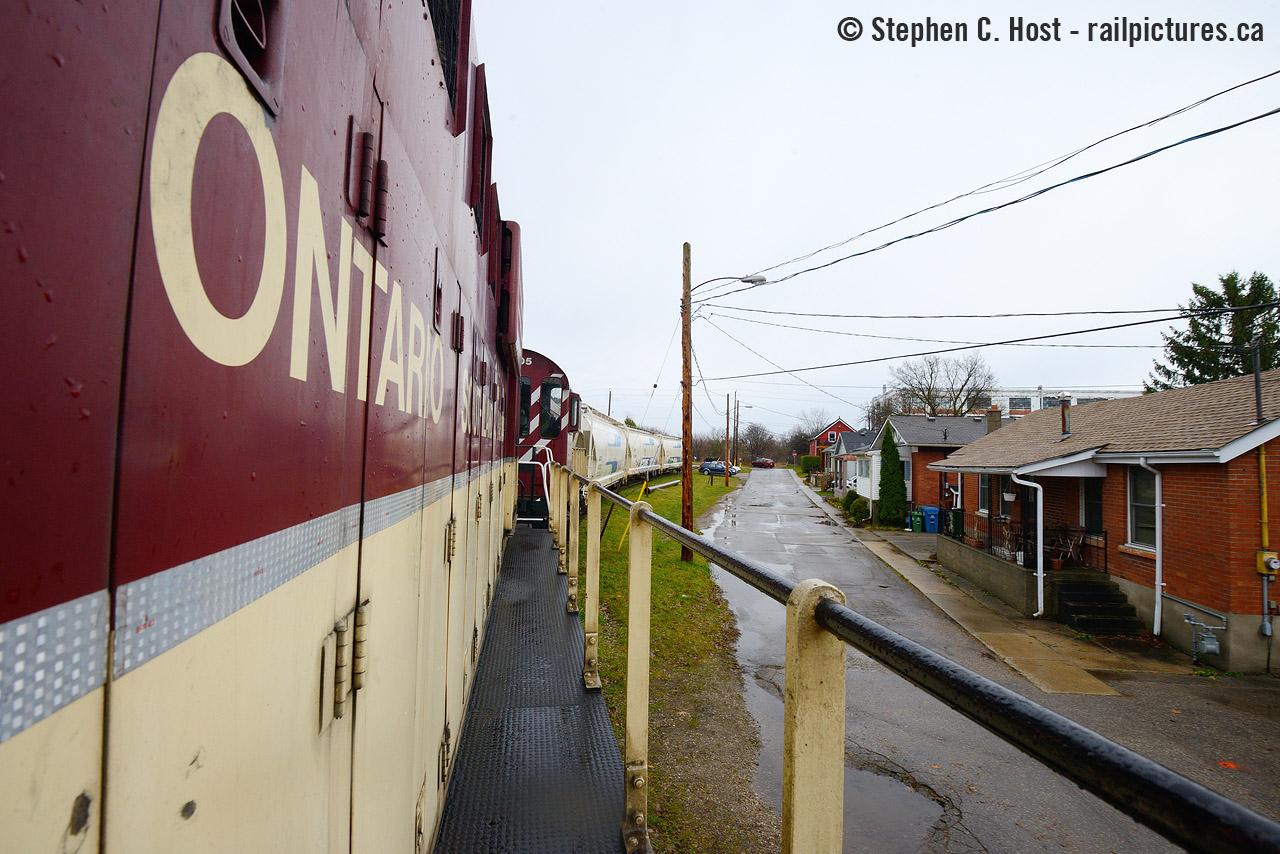|
Caption: As a gentle rain falls, flanges squeal in protest as OSR shoves loaded cars of clay around the north leg of the wye toward Owens Corning Fibreglass in Guelph. Passing these unique homes on Sackville St, you'll note there are no front yard, just the street and the railway property which is basically their front yard. Trains passed here almost daily when the photo was taken and no one cared to watch the train as it passed on this damp fall day. Trains still use this track today but far less frequent, and homes (a year ago) on this street were selling for $399,000............ cheap by today's standards.
|



Another interesting note: Much of the lands here were purchased by J.W Lyon who built the factory in the distance (Northern Rubber) but also built homes to house workers for his factories, around 1919-1920. This spur was also part of the deal to provide transportation and is why there is a small cluster of industrial lands that remain after all these years, but it’s quickly being turned into housing.
The Biltmore Hats factory has been removed and turned into townhomes, and the Rubber factory is turning into apartments, condos and townhouses. The spur into the rubber factory was removed around 2015 when the GHRA’s caboose was moved out for good after Chemtura left the property and terminated our lease.
Many of the homes along the railway are of interesting origin, having no traditional driveway or yard – a reflection of what they did in the 1920′s that wouldn’t fly today.
One interesting fact about the townhouses on the Biltmore site is the bricks. The builder had ordered them from the USA specially for this project as they are the type used in the construction of the Biltmore Factory.
Just around the bend there was a short siding (1-2 cars) to Imperial Oil, who had a storage tank off Morris Street just north of Biltmore (the one empty lot that remains).